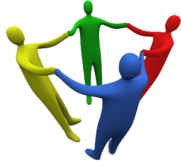Innovation
Explaining the buzzwords which students will need to know
In this day and age of expanding technologies, futuristic ideology and plain crazy industries, there are certain key buzzwords being thrown around the place left, right and centre. Before I started writing on Enterprise Alley, I didn't have a clue what half of these things were.


I'm sure over time I'll end up updating these, but for the time being, here are 5 buzzwords which I can all but guarantee that you'll come across within a week of starting a new job in industry.
- SaaS means "Software as a Service"; it's where an application has been taken or even begun online, and stays there. Whilst many would claim this is because of AJAX and Web 2.0, a SaaS application doesn't need to be installed - it's just there on the Internet waiting to be used. The best example I could find is the world renowned Google Docs, whilst Hotmail and other online email services could also be deemed as SaaS applications.
- Software+Services is primarily a Microsoft-term, whereas "Software and Services" is exactly the same thing, just not used as often. If there is a bridge between the offline application and an online application, this is where you come across Software+Services. Live Mesh runs online and has a offline program, Office Live Workspaces has the same, and Zimbra as a semi-controversial non-Microsoftical example.
- Cloud computing is a funny term which seems to change by the month. The cloud is a metaphor for the Internet, as the Internet is like a blanket which is all around us, much as the physical clouds are. However, the cloud used in metaphor again, conceals a lot of what goes on in terms of the different layers of the Internet. Just as the Internet has the OSI model, cloud computing also has a similar one itself.An analogy which was beautifully put by my housemate, Tom, was cake. Cake on the inside has many different layers, which can contain many different things; however on the outside, it's still a cake in looks and functionality. Genius.
- Enterprise 2.0 is something I've mentioned myself a few times over on Enterprise Alley, but it's important to know. "Enterprise" on it's own is a business, company, startup or organisation of some sort, and can also mean software which solves that problem. Not as daunting as it seems. Twitter started out as a small enterprise, then developed enterprise software (the Twitter online application) which solves their "problem", the problem which started the company in the first place. See?So from that, something which is deemed as Enterprise 2.0 can also be described as enterprise social software; social networking, RSS feeds aggregation, something with an enterprise solving key which runs either as S+S or SaaS, wikis and social bookmarking. There's a whole load of Enterprise 2.0 applications here, as a small selection of someone's favourites.
- Social media could be summed up in a single sentence; "anything that Jen writes about". But still, it's a new way of communicating with business partners, colleagues, your family - even friends, if you've got any left. Whether you use LinkedIn, Facebook, Bebo, or something which connects you and your computer to another person at their computer, that's social media. It keeps expanding and causing our lives to change to some extent. Before the lawsuits started, we could essentially watch on-demand television on YouTube, discuss it and rate it to other videos. It's online media; text, videos, pictures, collaboration, virtual worlds, games and blogs, all bringing people together.